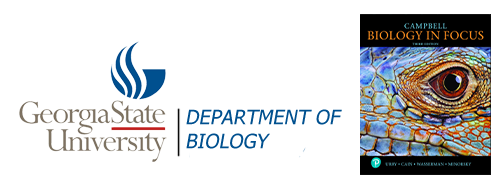- Home
Welcome !
Welcome to john houghton's home page for his biology courses. This site is designed as a hub for curating and sharing lectures, course syllabi, assignments, and links to relevant resources. Use the menu bar at the top of the screen to navigate through the site.
(Please note: this page is currently under construction.)

- BIOL 2107
Fall '23 CRN86772
Lectures: (1)
- Courses
BIOL 2107 Principles of Biology I
- Resources
General Resources
Given the immense scientific focus over the last two decades and more of the landing of robotic rovers on Mars.... -just over 19 and a half years ago, and the resulting exploration of the planet -as well as the more recent excitement of finding "organic compounds" on the surface (2012)... It might be appropriate to begin a discussion with regard to this very important enterprise on the surface of this desolate, forsaken planet, currently about 47 million miles away.
 ...and to ask why did we go there?
...and to ask why did we go there?
...what is Life?
In the early 1960's, James Lovelock was invited by NASA to participate in the scientific research for evidence of life on Mars. His job was to design instruments, capable of detecting the presence of life, which could be sent on a spacecraft to Mars. This wasn't straightforward, since it was hard to know what to test for: any life forms on Mars may be radically different from those on Earth.
This led him to think about what constitutes life, and how it can be detected. He decided that the most general characteristic of life was that it takes in energy and matter and discards waste products. He also reasoned that organisms would use the planet's atmosphere as a medium for this cyclic exchange, just as we breathe in oxygen and expel carbon dioxide.
David Orrell
...When you consider the tasks of the twin rovers "Spirit" and "Opportunity" and the more recent "Perseverence" , the question, as to "what is 'Life'?", is not such a straight forward question, after all?

Some Classical definitions of Life...... -online Merriam-Webster Dictionary, life defines "life" as “an organismic state characterized by capacity for metabolism, growth, reaction to stimuli, and reproduction.”
Group Responses......of non-biologists from a Perspectives course that I gave a few years ago.
Ability to Reproduce (self perpetuate) |
Inherent Existence of "Purpose" |
"Will" to Survive |
Response to [external] Stimuli |
Inherent Organization |
As yet Unknown Features? |
Complexity |
Ability to Grow |
Intelligence |
Ability to Track/Monitor Time |
Non-Spontaneous |
Awareness of "Being" or Consciousness |
If we can't even agree on how to address the question as it stands (or at least "pidgeonhole" or catagorize LIFE), can we at least identify some characteristics or concepts that we hope might encompass all or some of the "known" living, Life forms?
.... and then study them.
Some texts try to categorize these "life forms" as having various potentials........ "to reproduce", "to grow" and "to evolve".
.....crystals can reproduce, mountains and landscapes can grow, the earth has "evolved".
So what, or how, would we define a Life form?
But, why limit ourselves to only one simple definition?
Why not make a composite of some -if not a number- of these definitions?
1) Living things need to take in energy
2) Living things get rid of "waste"
3) Living things grow and develop
4) Living things respond to their environment
5) Living things reproduce and pass their traits onto their offspring
6) Over time, living things develop, change in response to their programmed development and their environment
7) Over time, populations of living things evolve (change slowly) in response to their environment
Not all living organims have ALL thes attributes, moreover, we end up with the same problem as before...
Why is this question so hard?
Many living things can be made up of a lot of "dead" material.........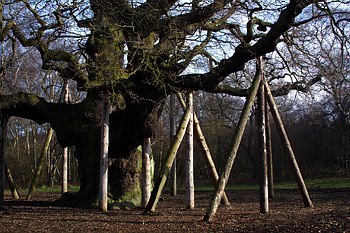
Similarly, some seemingly living things may not actually be....."ALIVE"... . 
Wendell Stanley, 1946... no metabolism of their own.... More recently, however, viruses fall ill.....and potentially acquire their own immune system. So, are they alive?
Because, for every hard, fast and simple definition of "Life" that we can come up with, we can probably come up with a variety of seemingly analogous systems / objects that one could normally identify as being "inanimate" or (as John Cleese might say..). "bereft of life", and yet possess some attribute that we would assign to "Life". We end up arguing -along with Supreme Court Associate Justice, Justice Stewart Potter in trying to wrestle with the "definition" of obscenity, circa 1964 that "I know it when I see it".
What we DO know is that LIFE is what makes Biology so interesting... and so broad in scope such that it simultaneously differentiates itself from the rest of the Natural Sciences, while at the same time incorporates many aspects of inherent features of these "other" natural sciences.
As such, whatever these "life forms" are, our experience has taught us that -in order to exist- they must stay within the bounds of scientific laws that have been established for the physical and chemical world.....?
Which begs the next question........What is a "Scientific Law"?
A Scientific Law is: "a descriptive generalization about how some aspect of the natural world behaves under stated circumstances".
Let's take another tack.....Where, can Life NOT exist……?
Within a state of "chaos" or entropy, or in a vacuum
Potentially, therefore, a prerequisite for Life is........, an "organization" that is able to harness the laws of the physical world, allowing "life" (whatever it is) to perpetuate, and -at the very least- reproduce itself.
OK, so "what are the minimal requirements for life to exist?".
hint:
"Good fences make good neighbours"
Robert Frost in "Mending Wall"
While this was written as a tongue in cheek commentary on our apparently inherent conditioning to rebuild our fences, defining ourselves by the "fences" that we build and rebuild, maybe it goes deeper than that, may be....
"The molecules and cells that form our tissues are continually removed and replaced;
it is the maintenance of pattern and architecture, I reasoned, that we call life."
Donald Ingber SCI American, Jan. 1998.
Indeed, among all the potential variables on living organisms, one critical factor, that is paramount to ALL living organisms is that they are all boundered by a well defined, specific and reproducible boundary, or fence. Minimally, therefore, we can say that "Life is organized".
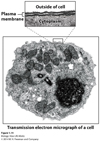
As a result of what we have discussed thus far I would venture to suggest some additional, important aspects/requirements of living organisms:
(a) Living organisms exist, subject to the laws of chemistry and physics,
(b) the very act of living requires energy.
(c) to survive -at least in our world- living organisms use organic atoms..."C H O N P S" to effectively cycle and recycle the available energy (in all its forms).... at the energetic expense of the local environment. Life is the ultimate capitalist.
We will come back to each of these aspects again and again throughout the course, but for now, because you might not have thought about them for a while, let me re-aquaint you with the basic "building blocks" of Life, and how these building blocks potentially interact and "reproduce" themselves in living systems.
The Biochemistry of Living forms.
Organic matter: Carbon, Hydrogen, Oxygen,…(C H O N P S)...
The Biochemist's perspective on "Life" can be appreciated as being a series of "cycles", Carbon, Nitrogen, Sulphur with a few requisite metals thrown in for good measure...


So, long with these quite different and limited need for the periodic table of elements, we can see that Life (whatever it "is" has a major influence on its own chemistry...
Oh by the way, life is also "British" !!!
...the importance of driving on the "right" side of the road, or more correctly, the importance of a good "hand shake"!!!!



Just like humans, molecules have a potential "mirror image" or possess chirality. While most non-living molecules are racemic mixtures of either form, living organims have developed a homochirality "rule" to allow for the formation of more complex, intricate structures that are Stereo specific.... L-amino acids and D-Sugars
The organinc chemist William Bonner spent 25 (he claimed "wasted") years trying to find a non-biological origin for the dominance of these biologically relevant forms.
Proteins:polymers of amino acids that are assembled into a chain in a manner that is determined by the gentic "blue print" of DNA. And once thes portein polymers are assembled they provide a dicrete function. Once the function is achieved, the protein can then be recycled into its constituent parts, only to be "re-constructed" under the direction of the message written in the mRNA.
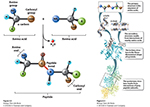
Nucleic acids: merely different storage materials of reproducible ribbons of "order" that provide the "blue print" for the maintenance of living structure.
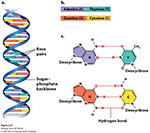
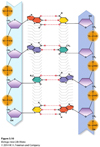
Sugars, Polysaccharides and Fats: paradoxically, though essential for life to exist, these are the transient, and yet stable forms of all living organisms.

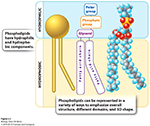

One of the curiousities about Life, is that it also always requires an inherent, sustainable form of energy to maintain it's existence.
The currency? One particular nucleotide, ATP!!!
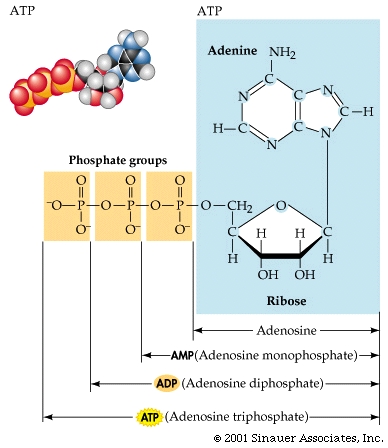

So, to summarize some of the concepts of "living organisms" that we have touched upon in this lecture....
(a) Living organisms do exist -subject to the laws of chemistry and physics,
(b) One of the central characteristics of living organisms (but clearly not the only one, is the presence and maintenance of some type of reproducible boundary.
(c) the very act of living requires energy. But according to the "laws of physics.....energy can neither be created nor destroyed", so...
(d) to survive -at least in our world- living organisms use organic atoms..."CHONPS " to effectively cycle and recycle the available energy in all its forms... at the expense of the local environment.
(e) Paradoxically, therefore, as a consequence of all these "requirements", I would suggest that a single living organism cannot exist (for any protracted length of time) by itself... ?
In all this analysis of life we mustn't forget that Biology is a Science, and thus we can only use scientific arguments to explain our biological world. Scientific explanations are not based upon beliefs, rather they are built upon previously determined explanations of the natural world that are modified as new information becomes available, or as new tests are brought to bear that contest the current explanation.

By way of an analogy: the world is good facsimile for- or perhaps even a metaphor for- a living organism....
The concept of "Gaia" as a living organims is a little fanciful, perhaps, but it can be effectively argued that the earth meets all the criterea that we might deem necessary for it to be considered "alive", after all, it embodies all the life forms that we know.
Do people really believe that the earth is actually a living organism? Some do, Yes.
Are they crazy?
Is this real Science? ....How do you know?
Even though researchers, like James Lovelock have spent, minimally, the better part of 70 years studying and researching the subject, is it a Science?
What makes it a Science?
How do we, as Biologists, claim to know anything about Biology?
Where should Biology be in the undergraduate curriculum?
More importantly, how dare we think that we -as biologists- know more than all the other learned scholars in other disciplines thoughout the world about Biology?
.....But what am I that dare
Fancy that I can
Better conduct myself or have more
Sense than a common man?
William Butler Yeats "Stream and Sun at Glendalough"

About Quick Facts Academics Colleges &Schools |
Admissions Undergraduate Research |
Libraries University Library Campus Life Housing |
Athletics Alumni
|
 |
